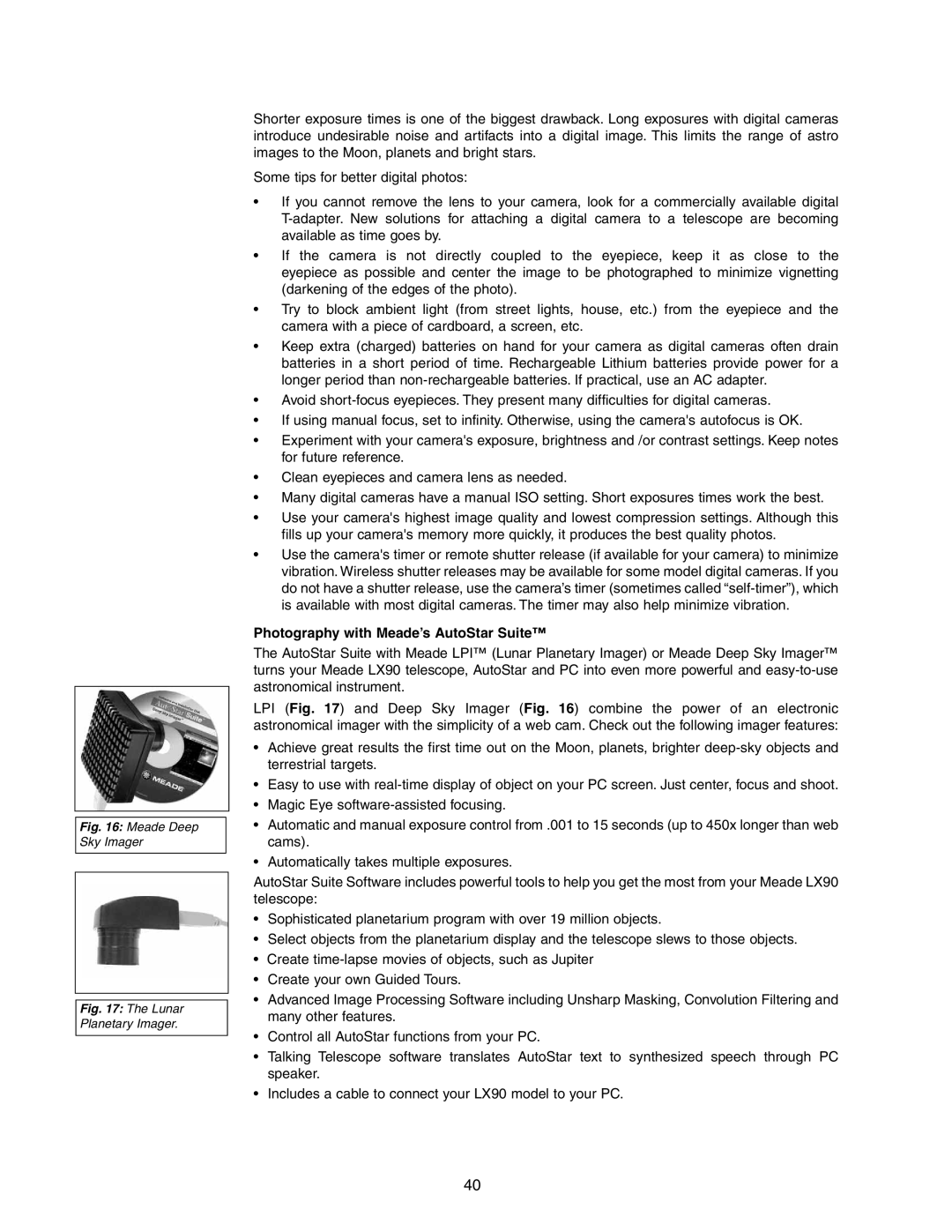
Fig. 16: Meade Deep Sky Imager
Fig. 17: The Lunar Planetary Imager.
Shorter exposure times is one of the biggest drawback. Long exposures with digital cameras introduce undesirable noise and artifacts into a digital image. This limits the range of astro images to the Moon, planets and bright stars.
Some tips for better digital photos:
•If you cannot remove the lens to your camera, look for a commercially available digital
•If the camera is not directly coupled to the eyepiece, keep it as close to the eyepiece as possible and center the image to be photographed to minimize vignetting (darkening of the edges of the photo).
•Try to block ambient light (from street lights, house, etc.) from the eyepiece and the camera with a piece of cardboard, a screen, etc.
•Keep extra (charged) batteries on hand for your camera as digital cameras often drain batteries in a short period of time. Rechargeable Lithium batteries provide power for a longer period than
•Avoid
•If using manual focus, set to infinity. Otherwise, using the camera's autofocus is OK.
•Experiment with your camera's exposure, brightness and /or contrast settings. Keep notes for future reference.
•Clean eyepieces and camera lens as needed.
•Many digital cameras have a manual ISO setting. Short exposures times work the best.
•Use your camera's highest image quality and lowest compression settings. Although this fills up your camera's memory more quickly, it produces the best quality photos.
•Use the camera's timer or remote shutter release (if available for your camera) to minimize vibration. Wireless shutter releases may be available for some model digital cameras. If you do not have a shutter release, use the camera’s timer (sometimes called
Photography with Meade’s AutoStar Suite™
The AutoStar Suite with Meade LPI™ (Lunar Planetary Imager) or Meade Deep Sky Imager™ turns your Meade LX90 telescope, AutoStar and PC into even more powerful and
LPI (Fig. 17) and Deep Sky Imager (Fig. 16) combine the power of an electronic astronomical imager with the simplicity of a web cam. Check out the following imager features:
•Achieve great results the first time out on the Moon, planets, brighter
•Easy to use with
•Magic Eye
•Automatic and manual exposure control from .001 to 15 seconds (up to 450x longer than web cams).
•Automatically takes multiple exposures.
AutoStar Suite Software includes powerful tools to help you get the most from your Meade LX90 telescope:
•Sophisticated planetarium program with over 19 million objects.
•Select objects from the planetarium display and the telescope slews to those objects.
•Create
•Create your own Guided Tours.
•Advanced Image Processing Software including Unsharp Masking, Convolution Filtering and many other features.
•Control all AutoStar functions from your PC.
•Talking Telescope software translates AutoStar text to synthesized speech through PC speaker.
•Includes a cable to connect your LX90 model to your PC.
40
